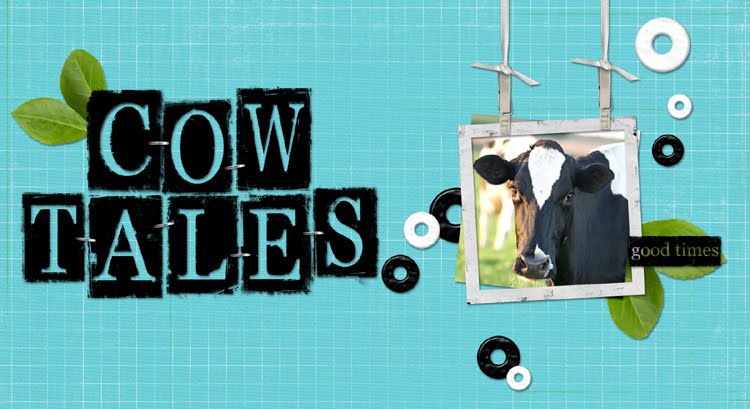In the middle of a herd check with one of our
seasonal grazing herds, I asked the dairyman a random question. “So how many calves were stillborn this past
spring during calving season?” The
client replied proudly, “Forty-eight calvings.
Forty-eight live calves.” Doesn’t
that send chills up your spine? Ask
yourself how many stillbirths your herd experienced over the past year. Truly, the above statistic is one I would be
very proud of. Look at national
statistics. An estimated 7-10% of all
births are stillborn. Close to 15% of
first-calf heifers and 7-8% of mature cows calve with stillborns. These numbers reveal a potential animal
welfare issue that needs to be addressed in addition to a lost profit
opportunity from replacement loss. Case
in point; I work with a large commercial herd that was experiencing a higher
level of stillbirths of around 10%. We
recognized a potential profit opportunity lost as a result of this high level
of stillbirths. We made a goal of lowering
stillbirths below 8%. I brought up the
grazer data. So we asked ourselves what
could be learned from the grazer.
The first
concept that came to mind was “wide open spaces;” a picturesque wide open, lush
green and clean spring-time pasture on which to calve. Overcrowding stress was not an issue. Consequently, cows were able to exhibit their
natural calving behavior of stress-free isolation. In the larger commercial herd, stillbirths
averaged 17% in January 2008 and 24% in January 2009 when the largest calving
slug of the year occurred. The obvious
problem was overcrowding stress associated with pen size that did not
accommodate the larger group. To
compound matters, commingling first-calf heifers in an overcrowded pen resulted
in more social stress and anxiety and a higher level of stillbirths, 31% in
January 2009. Furthermore, the
overcrowded pens were a nightmare to keep clean, meaning that the cows and
calves were exposed to a higher bacterial level. Construction of a new barn for milk cows
allowed the larger dairy to provide a larger pen for close-up cows. In addition, we now had two close-up pens which
enabled us to split mature close-up cows from first-calf heifers with both pens
providing in excess of 150ft2 per head and greater than 30” bunkspace per head.
Second, the
grazing herd had very little transitional problems. He treated one milk fever during the calving
season. Metritis, retained placenta,
ketosis, DA’s, and even lameness were non-existent. How does metabolic disease result in a higher
level of stillbirths? Cows with
metabolic disease at the time of calving have a slower calving process creating
more stress for the calf. In addition,
failure of passive transfer of IgG from colostrum is more common which affects
calf health. As you might imagine, with
close-up pen overcrowding, transitional problems in the larger dairy were a
greater issue. To make matters worse,
the close-up ration had obvious problems and needed adjustment. After the ration changes were implemented,
the LDA rate dropped from 5% down to <2.5% along with a reduction in
stillbirth risk.
Third, the
grazer had a tighter A.I. breeding window in order to maintain seasonal
calvings. Due to an adequate number of
replacements, cows that did not fit the window were culled. Cows experiencing lower conception rates and
longer calving intervals are at greater risk for developing transitional
problems. As a result of the need to
maintain a tight calving window, the grazer eliminated cows that would likely
be at greater risk for stillbirth. Because
the larger dairy was experiencing a high fresh cow cull rate, potential cull cows
were kept in the herd in order to maintain numbers. Consequently, he held onto cows with a
higher risk for stillbirths. Dairies
need to evaluate culling strategies and management areas that impact culling
risk.
Finally, the grazing dairyman practices cross-breeding and uses calving-ease sires for first-calf heifers. Certainly, hybrid vigor affects calf survivability and the smaller dairy breeds typically do not have large calves. The larger dairy began using sexed semen for first service in heifers and in 35% of cow first service.
Both dairies have an excellent heifer rearing program. Heifers calve between 22-24 months of age with adequate size and scale and body condition ~3.0. On many dairies inadequate heifer rearing management leads to higher stillbirth incidence. Both dairies have solid vaccination protocols and forage quality reducing stillbirth risk from infectious disease and mycotoxins.
Earlier studies have shown that 50% of all calf deaths are a result of dystocia or calving problems. Speak with your veterinarian about proper calving management and calf resuscitation techniques. Too often, lack of patience on the part of the dairyman or employee creates calving problems and a paralyzed or dead cow and a dead calf. Intervention should occur after 1 hour of active labor in mature cows and 2 hours of active labor in first calf heifers.
Keep in mind that the stillbirth risk factors discussed in this article impact the profitability of the cow. According to a Cornell 2007 study, cows that had a stillbirth had a 41% greater risk of dying or being culled during the lactation compared to cows that had live calves. Furthermore, median days open increased 88 days which increases culling risk compared to cows that had live calves.
As you can see, there is much that we can learn from each other. The case outlined in this article demonstrates how interdependent each dairy management segment is to each other. Management problems that diminish the health of fresh cows lead to greater stillbirth risk.


Hello, an amazing Information dude. Thanks for sharing this nice information with us. Cattle Drench
ReplyDelete